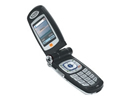'ZDNET Recommends': What exactly does it mean?
ZDNET's recommendations are based on many hours of testing, research, and comparison shopping. We gather data from the best available sources, including vendor and retailer listings as well as other relevant and independent reviews sites. And we pore over customer reviews to find out what matters to real people who already own and use the products and services we’re assessing.
When you click through from our site to a retailer and buy a product or service, we may earn affiliate commissions. This helps support our work, but does not affect what we cover or how, and it does not affect the price you pay. Neither ZDNET nor the author are compensated for these independent reviews. Indeed, we follow strict guidelines that ensure our editorial content is never influenced by advertisers.
ZDNET's editorial team writes on behalf of you, our reader. Our goal is to deliver the most accurate information and the most knowledgeable advice possible in order to help you make smarter buying decisions on tech gear and a wide array of products and services. Our editors thoroughly review and fact-check every article to ensure that our content meets the highest standards. If we have made an error or published misleading information, we will correct or clarify the article. If you see inaccuracies in our content, please report the mistake via this form.
LG 7100


LG 7100
pros and cons
- Integrated digital camera with flash swivelling screen.
- PC connection via serial cable no Bluetooth no email client external aerial.
If you find that photos from your current camera phone are too dark, then the LG 7100, with its integrated flash, could be for you. This dual-band GPRS clamshell unit is available exclusively on the Orange network and costs £79.99 with a monthly contract. It’s a compact yet chunky 94g camera phone with a good range of features, including the aforementioned flash unit and a neat twisting screen, However, it also misses one or two tricks.
Design
LG locates the lens of the camera in the left end of the barrel hinge, in contrast to Samsung’s SGH V200 clamshell, where the lens rotates around the cylinder. Beneath the LG 7100’s lens is the built-in flash, which is a first for a camera phone. But don’t expect too much from the flash coverage: due to power limitations, LG recommends that your subject remains within 30cm of the camera.
The phone, which is finished in black and matt silver design with chrome details, has a solid and well-engineered swivelling screen. The main 16-bit colour, 128-by-160-pixel TFT display rotates 180 degrees anti-clockwise and 45 degrees clockwise giving you plenty of flexibility. On the outside of the clamshell section, a mirror-effect disc houses a 96-by-64-pixel colour OLED ‘sub screen’.
Large rounded rectangular number keys are backlit in blue. The four-way navigation key has an effective central input key (unlike the Samsung V200), and is surrounded by the two soft keys, the green ‘dial’ and red ‘end call’/power keys, with a cancel button between them.
The camera button is on the opposite edge to the lens, which makes sense. However, when holding the phone with your left hand you can end up with your thumb over the camera lens thanks to its positioning in the hinge.
Features
There are three programs in the LG software bundle. When transferring contacts with the LG PC Sync program, you get a request that a program is trying to access Outlook and requires your authorisation to continue. Click the Outlook tab as it is set to Phonebook by default. As the tabs are in two tones of grey, you might not notice and wonder why your Outlook contacts have not appeared. If you store your contacts by category, you’ll find that the transfer program simply gives you a long list with no categories, although you can arrange names alphabetically. Not the most user-friendly program, but it works.
The LG Content Bank has three selections: Images, which are split into eight categories; Melodies, which in addition to a smattering of classical tunes also include a cheesy American female saying ‘Honey, hurry up and answer the phone’; the last category is Java games, with a choice of ten to download.
Also included in the software bundle is the LG Internet kit, which is used to connect a PC to the Internet via GPRS. Pressing the blue key in the middle of the navigation keys rapidly connects you to the Orange homepage.
Features LG might consider adding include a USB rather than serial PC connection, Bluetooth connectivity, and an email client.
Performance
Taking a photo involves slightly more than pointing and clicking. After initially pressing the photo button on the right side you have to use the left soft key, twice, to reach the ‘Take photo’ options, when you can finally get snapping.
Photo options include: Standard, With Frame or Continuously. The With Frame option is pretty excruciating: images of faceless (and exclusively male) people in a variety of settings allow you to insert your friends’ features, funfair-style, in the space provided -- options include a clown, a moustachioed cowboy, a mullet-haired footballer, an Indian chief, a grunge punk and a jungle explorer. The ‘Continuously’ option shoots 10 images at approximately one every half second, and allows you to save or delete individual images.
You can fine-tune image resolution from 48 by 48 pixels up to 640 by 480. You can also turn the flash on or off, apply three levels of digital zoom and rotate the image. You get three quality options and three brightness levels. Colour settings are standard, sepia or black-and-white.
If the ambient lighting is low, make sure your subject is no more than 30cm away from the flash to avoid dark results. Once you have taken your photo, you enter a screen that holds your image and offers three options: store image, send image or delete. There’s also a sliding scale that indicates the amount of free photo storage space -- 1,000KB is allocated for photos, a capacity of 34 images with an average size of 29KB.